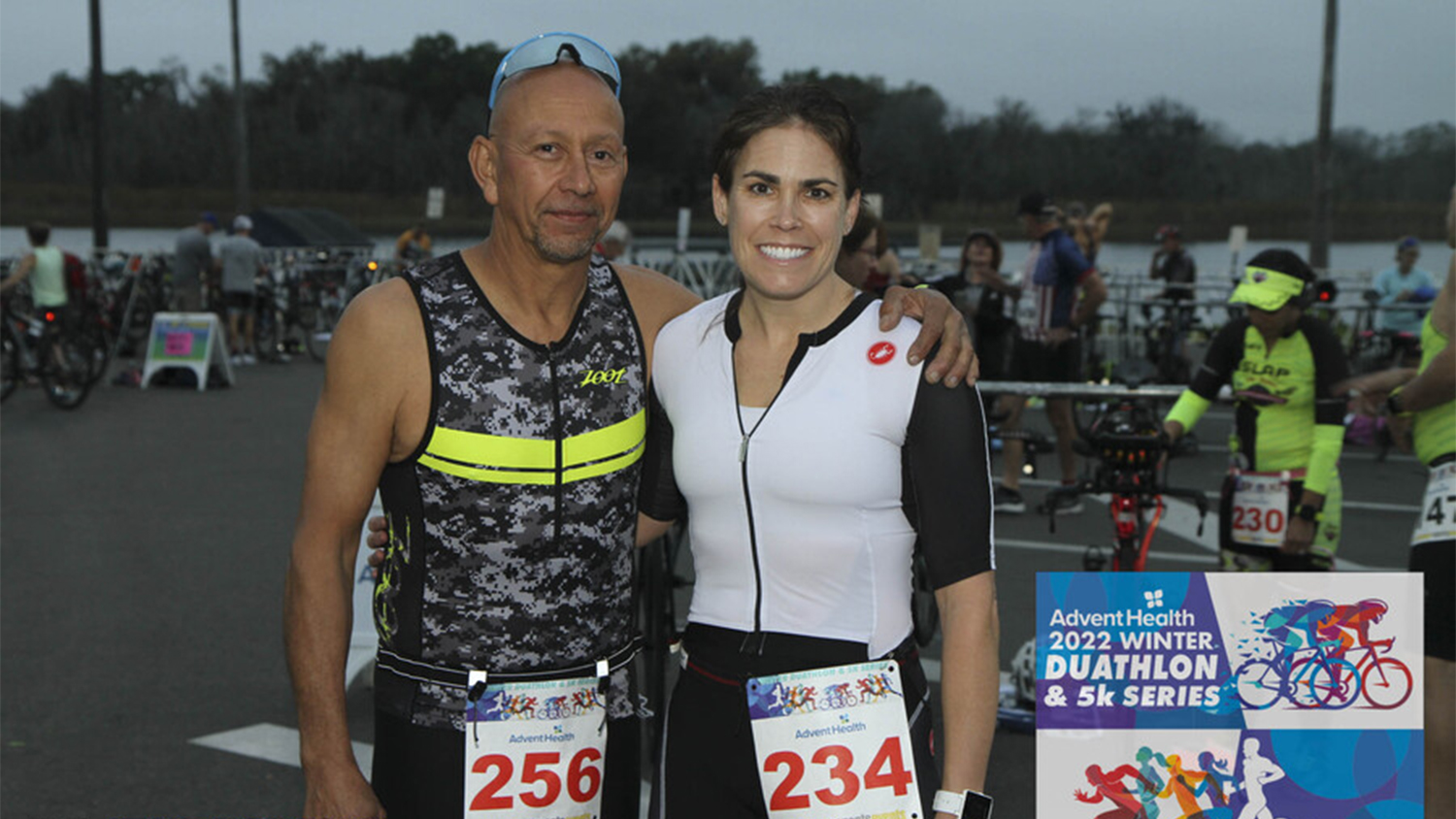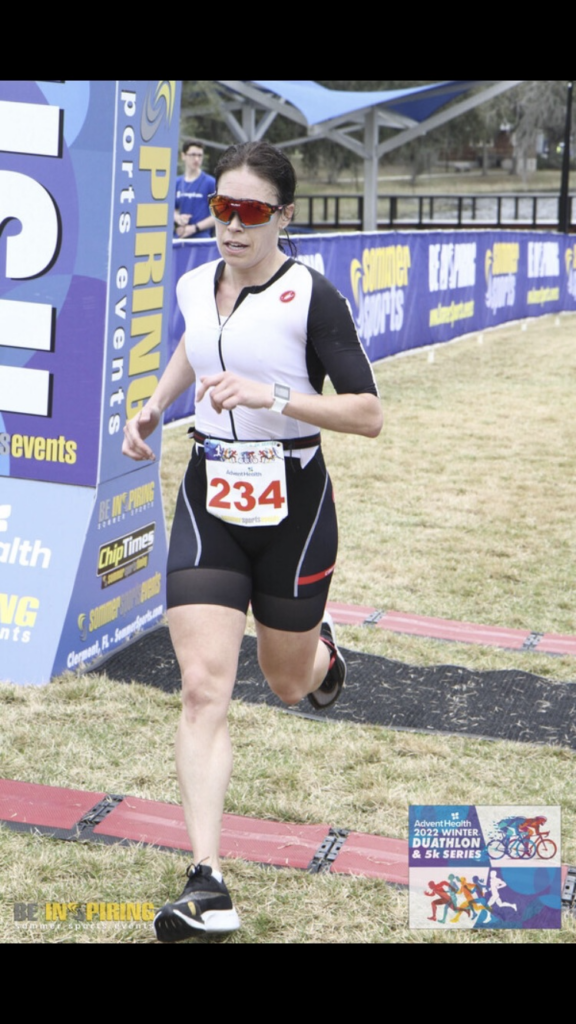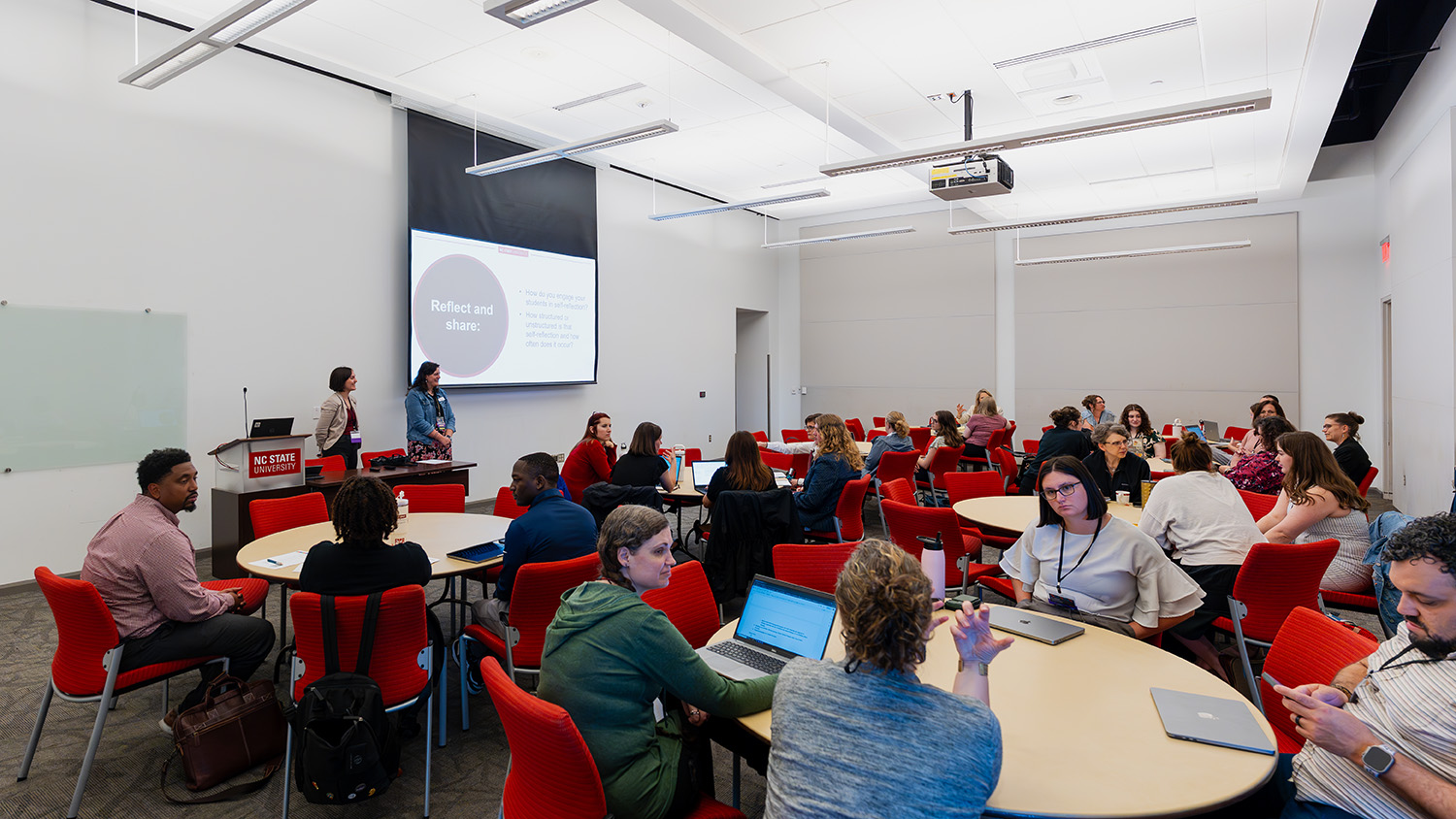Harrington Places 1st Amongst Women, 5th Overall in AdventHealth Winter Duathlon
Department of Health and Exercise Studies faculty member Renee Harrington recently competed in the AdventHealth Winter Duathlon Series in Groveland, Fla., where she placed 5th overall and 1st amongst women.

By Zoe Howerton
70 degrees and slightly overcast, the AdventHealth Winter Duathlon Series could not have occurred on a better day. The perfect race weather, paired with Renee Harrington’s expertise and extensive training, made for a day of great success for both Harrington and HES as a whole.
A duathlon competitor since 2016, Harrington loves the challenge of the event, as the land-based sports in a duathlon (biking and running) are all lower-body work, whereas the swimming in a triathlon is largely upper-body. Since competitors are mainly relying on their lower body, they must heavily train in that area in order to succeed.
Harrington now competes for Team USA and will compete for Duathlon Nationals in Texas at the end of April and Duathlon Worlds in Romania in June.
As one of the first events of the season, this duathlon was extremely high-energy and “very much like the excitement of when you stand at the starting line and it’s go time,” says Harrington. Since it was her first race of the season, the experience served as a way to see how her training is going and adjust how she needs to prepare for future competitions.
The event started with a 10k run (6.2 miles), followed by a 40k bike ride (25 miles), and closed with a 5k run (3.1 miles). To prepare, Harrington primarily utilized the brick workout: back to back training in two disciplines with no rest in between. “I did a lot of running and biking and then actually putting the two together. It’s called a brick workout – where you run and then you bike or you go for a bike ride and then immediately run afterwards, essentially simulating the duathlon, so I did a lot of those types of workouts.”

Core work and strength training also helped her to prepare. Harrington’s high intensity and run conditioning classes she teaches in the Department of Health and Exercise Studies added a frequency and accountability to the workouts, which proved invaluable as it allowed her to “chase after the young kids” day in and day out. Her HIIT class, in particular, was excellent training as the explosive moves and exercises provide a strong basis for power development.
Harrington’s main takeaway from the event came in the form of a new race strategy: “Don’t be someone else’s carrot.” This strategy evolved from the event’s specific course layout, which had a lot of hills and turns. “If I run fast enough that my competitors can’t see me, then they won’t be chasing me down,” said Harrington.


